The Leica M Edition 60 – or Leica M60 as it’s more commonly know – is seemingly one of most enigmatic cameras Leica have built, certainly digital cameras. In fact, it’s possibly one of the most unusual digital cameras built by any brand. It even raises an eyebrow from folks who haven’t the first clue about cameras. The idea of a digital camera without a screen on the back is just too much for some people to fathom; clearly the Apple QuickTake is a long forgotten technology. Of course to some folks, perhaps more in the know about cameras, it’s a unique and rather unusual piece of equipment that manages to offer a film-camera-like user experience with a digital end result. But, is the experience film-camera-like enough to please a film photography fanatic like me? Is there anything more to it than a facsimile of a film camera? And actually, is a digital camera without a screen really that unusual a proposition?
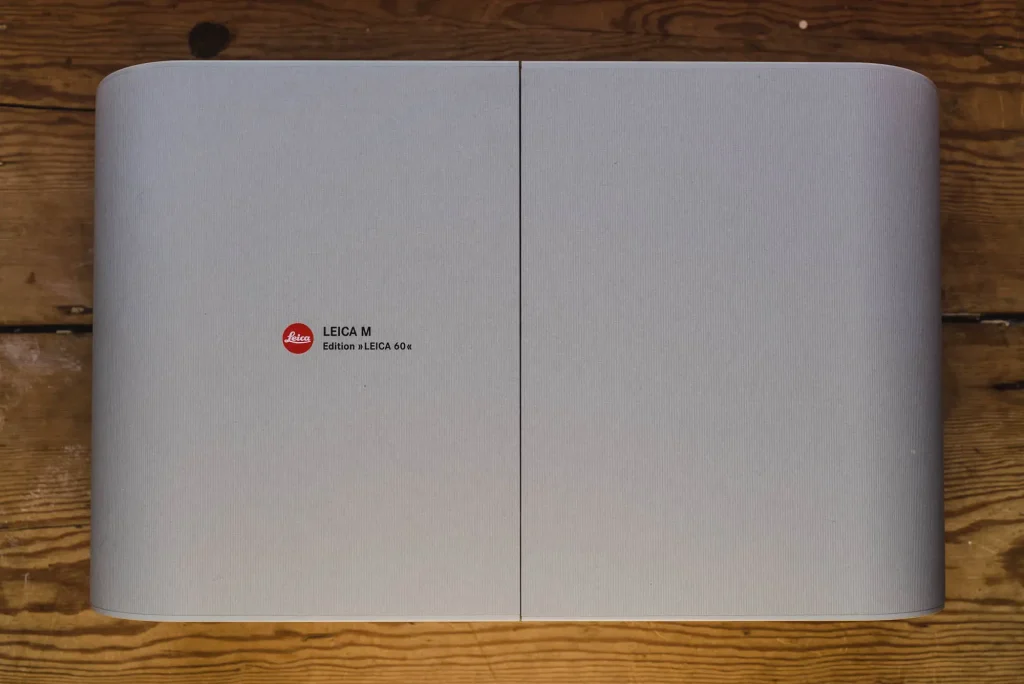
The Leica M Edition 60 – a personal dream camera realised
As mentioned in my previous post about the first shots I took with the Leica M60, I haven’t used Leica M digital cameras in a real way before. As such, I’m coming at the assessment of this camera from the perspective of someone with an obvious fascination with Leicas, but specifically those that are loaded with 35mm film, and not an SD card. This is quite likely to leave some holes in my knowledge with regard to how it technically performs against its digital peers, but I like to think that anyone reading this website is unlikely to be too worried about that. What I suspect my audience is more interested in is how this stacks up against a film Leica M. Well, that’s definitely going to be a portion of my review, but for the sake of balance, and perhaps to give you an idea of where I am coming at this from I’d just like to talk a bit about my personal feelings towards the concept of such a stripped back digital camera first
Wishing upon an Epson
I think the closest any manufacturer has achieved to the Leica M60 previously is the Epson R-D1. The Epson is a camera I owned for many years, and over the period of time I had it, enjoyed it a great deal. Though it never felt quite perfect. For a start, it had a cropped sensor. I don’t really like cameras with interchangeable lenses and cropped sensors, if I am going to shoot a 50mm lens, I want it to give me a “normal” field of view, not a telephoto one. Secondly, whilst stripped back, it wasn’t brave enough. In fact, in many ways, ignoring its positive attributes, it could have been described as a dumbed down digital camera with its small screen and infuriating menu system. The reason I bring it up, is because if you had asked me about it 4-7 years ago, whenever it was I was using it the most (I can’t quite remember), I would have said “I just wish it was a full frame camera and didn’t have a screen”.
Reasonable expectations?
In reality, I never expected any brand to ever make anything like the Leica M Edition 60, so over the years I have dabbled in the idea of buying a “normal” Leica digital rangefinder; the M9 being the one that I think would most suit me. But, I’ve never quite bitten the bullet and bought one. One of only a handful of experiences of a Leica M9 – an experience that was born out of my coming very close to purchase – was when I tried one in a shop. It was an experience that to some degree gave me a bit of a reality check and made me step away from the idea. I had the camera in my hands and I was taking a few snaps around the shop and in the street outside, when in the process of fiddling with it, I decided I wanted to change the ISO settings. I couldn’t fathom it, nor could the person serving me in the shop for that matter. In the end, the Leica “expert” was called over to help. Even he had to fiddle with it for a moment. Eventually he remembered that I had to press and hold something whilst turning something else. I said at the time “a simple dial would suffice”… The issue was, as soon as I struggled with it, it felt like any other digital camera. Actually, it just felt like a normal digital camera, and somehow some of the magic I’d thought I’d find in it was lost. What I wanted was that feeling of pure control I get when I use one of my film Leicas, and it just wasn’t there. Now, I’m not saying I wouldn’t have got used to the controls, of course I would… If I can get my head around a Sony A7s then there’s little I am going to struggle with, but I just wanted a digital Leica to be a bigger departure from all those buttons and head scratching.
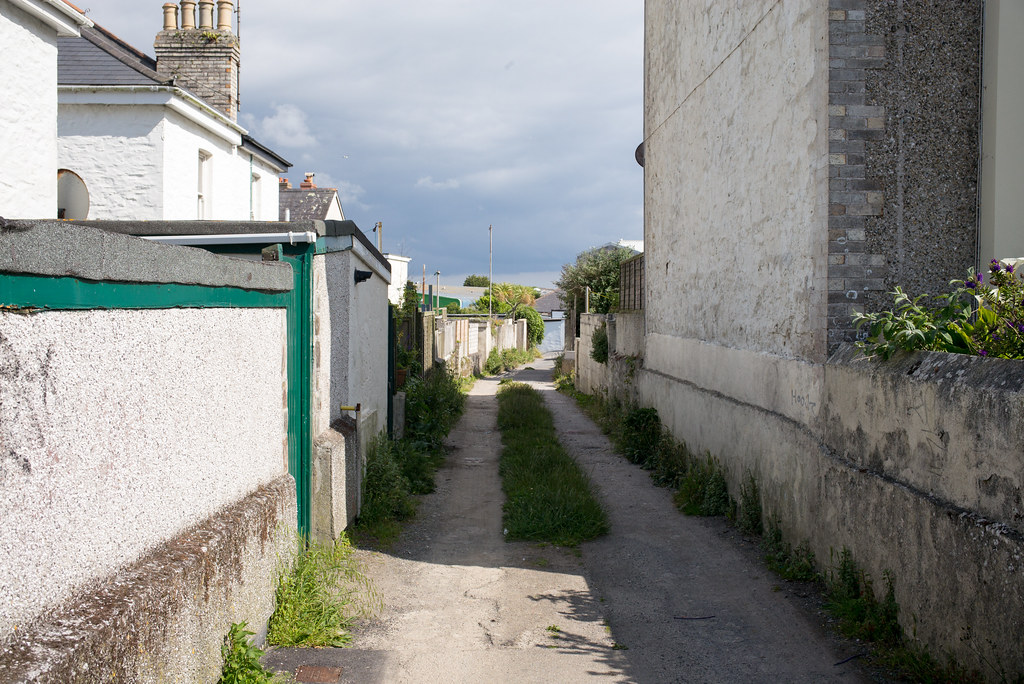
The Leica M Edition 60 lands
You can imagine my reaction when sometime last year the Leica M Edition 60 was announced. It actually felt a little like someone had stolen my invention; the digital camera I’d been hoping to see realised for all those years… … Oh, it’s £12k, that’s the end of that idea then… Well, not quite, if I couldn’t afford to buy one, I was going to have to try one.
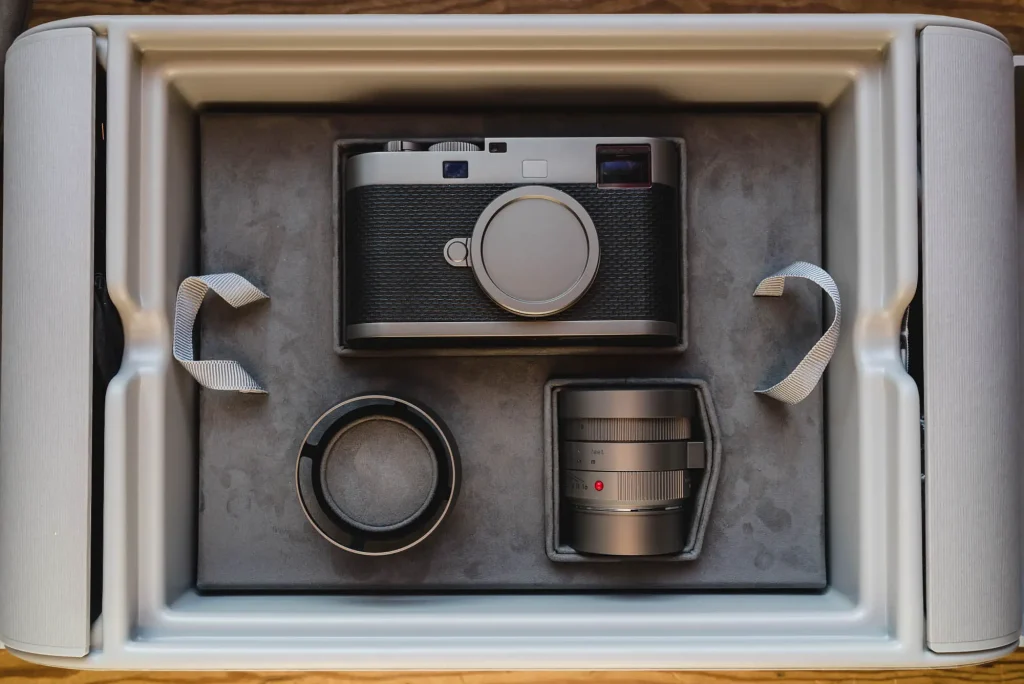
As regular readers will know, earlier this year at the photo show at the NEC I approached the then UK marketing person at Leica and asked – based on the fact that I had a reasonably well read blog – if I could borrow a Leica M-A for review. She only went and said yes! Feeling a bit like I was on a roll, I asked if I could borrow the Leica M60 afterward… Her response was less positive but, went something like “let’s see how you get on with the M-A first”. Well the Leica M-A came and went, I now have one and am mostly happy with it. I’d kept a fairly steady email dialogue with Leica but through my primary contact there leaving for different pastures I wasn’t sure whether or not I was going to be able to borrow anything else. That was until fairly recently when one of the other members of the marketing team at Leica UK – someone I’d dealt via email with but hadn’t actually met face to face – got in touch and said something along the lines of “if you still want to have a go with the Leica M60, let me know and I can have it to you by next week”. I’m sure you can imagine my reaction to that too!
So here I am, Leica M Edition 60 in hand, time for a review? Well actually, I’ll get to that in a bit, first I want to talk a bit about what’s behind this camera and what I think it stands for…
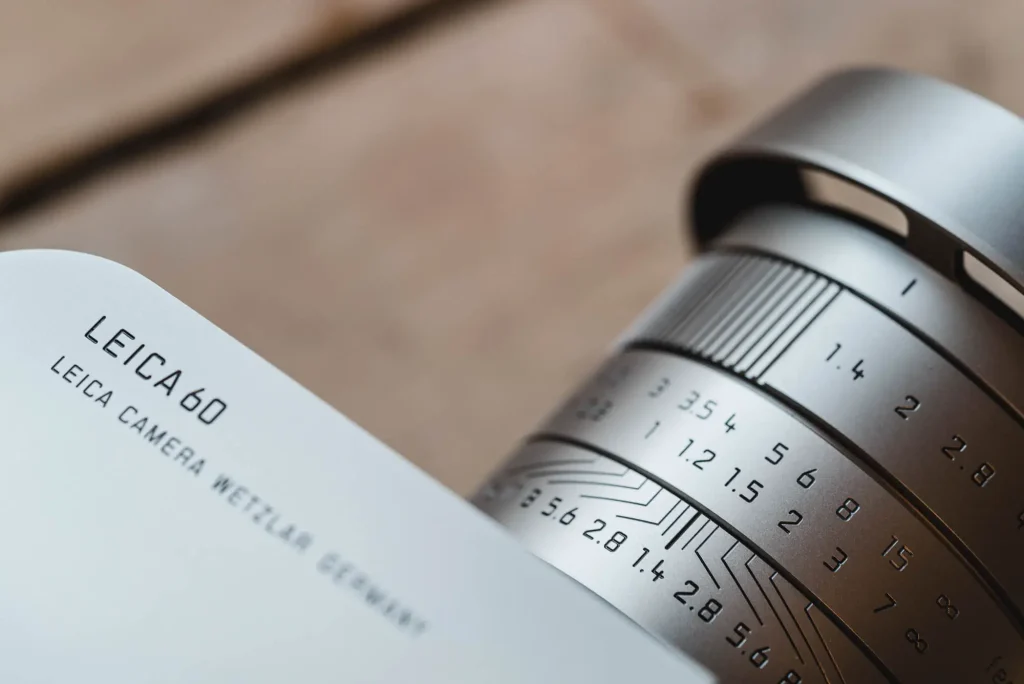
Celebrating 60 years of the Leica M
The Leica M Edition 60 was designed and built to celebrate 60 years of the Leica M camera, or more simply, the 60th birthday of the Leica M3. It’s fair to say, they had good reason to celebrate too! Short of the Leica M5, which was a deviation from the design anyway, every camera in the directly descending line from the M3 has seen a good level of success and popularity in one way or another – in fact, even the M5 has its hardcore fans. As mentioned in my Leica M-A review, it’s such a successful design that even only the slightest modification to it can still create a viable product today, all these years on.
Of course there have been some extreme modifications to original Leica M design, the very latest modifications being those that create a fairly advanced digital camera. I say “fairly advanced”, since it’s not like we’re talking the bleeding edge of tech like you might find in a Sony A7RII (the latest all singing all dancing Sony at the time of writing… just in case a week has passed and another has come out…). Though, whilst they might not be bleeding edge, these modern M Leicas do at least have live view screens, and that’s pretty forward thinking for a Leica M.
The deconstruction of the digital camera
But of course, the Leica M Edition 60 doesn’t have a screen at all, in fact, it doesn’t have many buttons or switches either, it just has a shutter speed dial, an lSO dial, an on/off switch and a shutter button. It is a digital camera with the level of control and function of a fairly basic film camera. This must surely make it a backward looking design then? Well, I’m not so sure it does. The reality is, the best designs are often the most simple ones, and I don’t think it is wise to get “simple” and “backward” as concepts confused. The beauty of the camera is that fundamentally it is a very simple device, and as such, there are very little in the way of controls that need to exist for a photo to be taken with accurate exposure. The rangefinder, especially the Leica M is testament to this. The reason the design endures so effortlessly, at least with Leica’s film cameras, is that it was right to start with. The modern conveniences of auto exposure and the like, are just that, conveniences. The film camera in its most basic form can operate with little more than a shutter speed dial and an aperture control around the lens. But of course – unusually for me – I’m not talking about a film camera, the Leica M Edition 60 is a digital camera, and digital cameras, even the most basic ones, need reams of controls and buttons and options and switches to operate to their fullest, don’t they?
The basic principle of all cameras is the same
The reality is, of course they don’t, the concept of a digital camera need not be any different to the of a film camera. The only difference between film and digital is that film cameras film speed is set for the length of the film, whereas a digital cameras sensitivity can be set shot by shot for as many shots as the memory card will hold. Other than that, the basics are identical. The reciprocal laws between shutter speed, aperture and sensitivity are the the same; as can be the controls for changing them.
So what’s the point in all these buttons and switches on a “normal” digital camera? Well, frankly, I ask myself that most times I pick up one of my Sonys. Don’t get me wrong, I think the Sony A7s/r are awesome pieces of equipment, they are just so profoundly complicated to use. Admittedly, once set up, or “customised” to my tastes I’ve made them work in a way that suits my shooting. But, and this is a big but for me, I had to go through one hell of a steep learning curve to get there. And even now, when I pick them up after not using them for a week or so I go a bit cross eyed for a few moments until I remember what I’m doing with them.
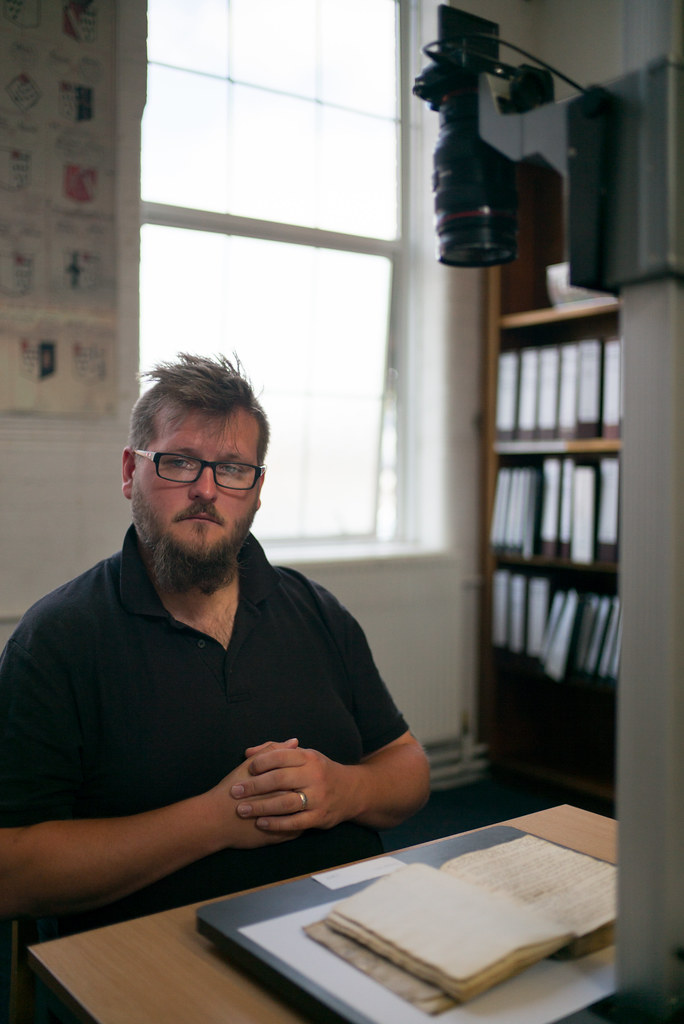
Complication breeds over complication
The problem is, for these cameras to be so customisable, there needs lots of options. Options lead to complication, and more complication breeds over complication. Take something like autofocus. It starts with a system that, like old film cameras, focuses using a spot reading in the centre of the viewfinder. Then it’s decided it might be useful for that point of reading to be off centre sometimes. So then we have “3-point autofocus”, one point in the centre and one either side. This needs a 2-way control dial to select which autofocus point is used, and maybe a switch to select between the automatic setting of the autofocus point and manual setting of it. And then, what about having a focusing point above and below the centre? Now it needs to have a 4-way control dial. Then what about diagonal offset focus points, and focus points different distances from the centre? Now all of a sudden there’s a need for a 8-way control dial. Then there might be a need for single shot AF, continuous AF, 3d tracking AF that “sees” the subject and follows is across the frame. Then there are options for when the AF is activated, half press or via a separate button. I could go on. The various modes for autofocus can create the requirement for a screen driven menu system, switches, control dials, all sorts. All in the name of “customisation” and added function.
The irony is, all this function is derived from something originally designed to make things more easy and more simple, the automation of focusing. Yet what has transpired is actually one thing and very much not the other. Focusing is arguably easier, quicker and potentially more accurate, but the expense of this is profound over complication of function and actually, arguably, far too much choice.
Don’t mistake this for the voice of a luddite…
Before I get any further, I just want to point out, that I’m not a Luddite. I can argue a case for all of that customisation in use. I loved my old Nikon D3, with its 51 point 3D tracking fancy-pants autofocus – it’s the quickest most accurately focusing camera I’ve ever owned. There was an occasion when I landed a job in my early days as a professional taking photos at a 24 hour motor racing event. As a completely inexperienced-in-the-field motorsport photographer, all those features made it a lot easier for me to get a couple of useable shots of/for the client whizzing around Silverstone. I also know from experience that off centre focus points combat the effects of changes in focus distances at shallow depths of field when the subject is off centre. But actually, on the other side of the coin, I can also argue the case for just not being so crap at Motorsport photography that I needed all that gear to assist me. I can also argue a point for maybe just stopping down a bit to avoid the depth of field issues associated with reframing from a centre focus point.
The unquestioned march “forward”
In fact, I could quite easily continue to argue with myself for a long time about the various pros and cons of levels of automation and function in cameras – I definitely get both sides of the argument. The vast array of possible auto exposure modes available on cameras today, the various drive modes, white balance, file types and size etc etc etc… Every single one of these functions and feature brings advantages. But at the same time they all also unfurl into mind boggling connotations of different functions that even the most steadfast digital geek would be hard pushed to find use for all of. This is all emphasised by the fact that market competition forces one brand after the next to think up new levels of functions and features to add to ever growing feature lists and pages of options of customisations. My Sonys have a whole bunch of customisable buttons; buttons that don’t even have dedicated functions, but instead are there for the sole purpose of letting me decide what I want them to do. Cameras have become so heavily packed with features, that there simply isn’t the room on them for enough dedicated buttons. My Sonys even let me download apps on to them to expand the feature set even further! The next generation cameras will have yet more features and functions too, it’s just how they sell them.
What’s odd, is that this level of function in digital cameras seems to have never been questioned. When digital cameras hit the market, they were much more simple beasts than what camera manufactures churn out today, but they still had lots of buttons and fairly complex user interfaces. It seems to me that the technology that was used in the manufacture of film cameras reached a level, then digital came along… Whilst in the very early days of digital there were a few fairly simple cameras, broadly speaking, the technology just carried on from where film cameras left off. In fact, since there were a bunch of new problems to solve like file types and white balance etc, cameras took a big jump toward the more complicated just by the merit of the digital domain.
Because of this, unlike with film cameras where there are options that range from the the complete lacking in technology such as the Leica M-A, all the way to the technologically very advanced Nikon F6, there never really has been a stripped down ultra-simple digital camera. If you’re looking for a feature packed, all singing all dancing camera, then look no further than any single camera on the market. They are without exception, all full of tricks. Even Leicas latest models have live view and video and accessory clip on digital viewfinders etc. The overly complicated camera segment of the market is saturated beyond reason, but the under-complicated segment of the market is practically non existent, and has never really explored.
The M edition 60 – Crazy by comparison
It’s because of all this that the Leica M edition 60 feels like a crazy invention; it sits alone, almost entirely without peers. But despite all common instincts saying this is a crazy invention, I’m not really sure that it really is that far left field an idea. It seems unusual, but really this is only in the context of what is otherwise available. In actual fact, what I find more crazy when reflecting on what I have here in my hands is the idea that this concept is not one that’s previously been brought to market. It doesn’t feel even remotely crazy idea when I assess it as a tool with potential appeal to some photographers. Of course it isn’t going to appeal to all photographers, but it will do to some… it certainly – at least on face value – appeals to me! So the question is, why don’t more cameras like this exist?
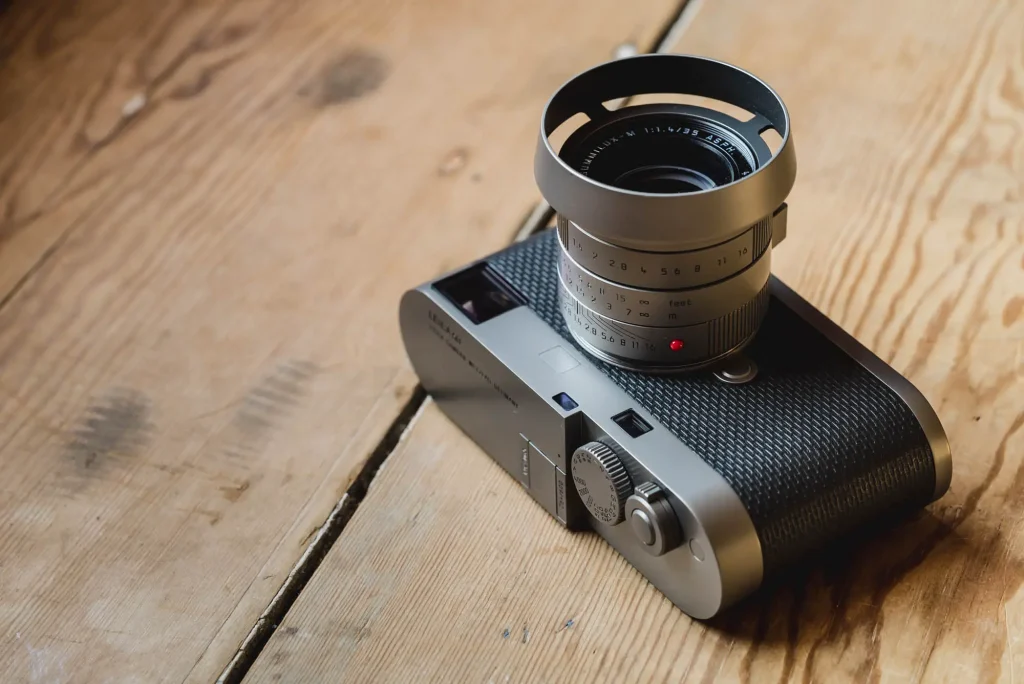
Leica’s unique position
I think the first reason is simply that few other manufacturers are in a position to attempt such a thing. Leica make rangefinder cameras, cameras that even at the top end of their range are still entirely manual focus and rely on the same basic concept of focusing they started with all those years ago. Because of this, there isn’t so much function to reinvent, or indeed depreciate to. If Nikon were to have done something like this – like they should have done – when they brought out their hugely flawed attempt at a “pure” photographic experience – the Nikon Df – they would have had to have either massively simplify their AF system or depreciated it entirely to manual focus. Leica M cameras have never been autofocus, so there was nothing to depreciate or simplify. Leica’s auto exposure system – still present in the Leica M60 – is so simple it didn’t need to be simplified that much either. And beyond these functions – as mentioned above – there are no other functions that are actually fundamentally required for a camera to work as it should.
Leica also had all the parts pretty much ready to go on the parts bench, some alterations to the body were all that was really needed. For any other manufacturer to do this, they would need to build something from scratch.
Leica, through the strength and position of their brand are also able to do slightly more left field things. For a start, they can balance the books of the R&D costs of doing something like this by making it a “special” or “limited edition” and charging through the nose for it. I can’t imagine any other manufacturer getting away with this sort of move. Leica barely get away with it without getting the usual rumblings of flak from naysayers on forums etc.
Consumerism
Secondly, a camera like this provides too many full stops after its purchase, and really since the camera industry has more in common with consumerism than it does photography this sort of decision would be considered a non-started for most brands. The problem is, the big brands aren’t really interested in selling us cameras with long life spans, cameras that we are going to be satisfied with for a long time. Take away all the trickery and fancy pants modes, and there is very little with which lure photographers to upgrade. There is very little that can be added to a camera that has had so much taken away from it as part of its appeal. Things like more megapixels could be added maybe, but I would guess that most people buying a camera like this couldn’t really give a fig about things like quantity of megapixels, I certainly don’t!
All of this, makes the Leica M edition 60 not only a unique product, but a unique product that is unlikely to be copied or emulated any time soon by any other brand. But – and is if by magic, to the meat of my post I get – is it actually any good? And does it actually work as a concept?
Leica M Edition 60 Review
I had a feeling just looking at the pictures of the Leica M60 that it was going to have a weight to it. It does, it’s quite heavy, and feels rock solid with it. It always surprises me when handling a digital Leica just how big they are. I personally don’t think they handle quite as nice as the film versions which feel positively svelte by comparison. I could be mistaken, but I think this Leica M60 is actually fatter still than the M9. I must admit though, initial reservations aside, I got used to its size and handling quite quickly. The finish of the metal is also very nice, and I quite like the dark titanium metal, though I’ve read a few negative comments about it. My biggest issue with the colour is not what it looks like in isolation, but that it doesn’t match any other lenses. With the matching 35mm Summilux on there it looks very smart, but swap it for my 50mm ‘cron and it just looks a bit odd.
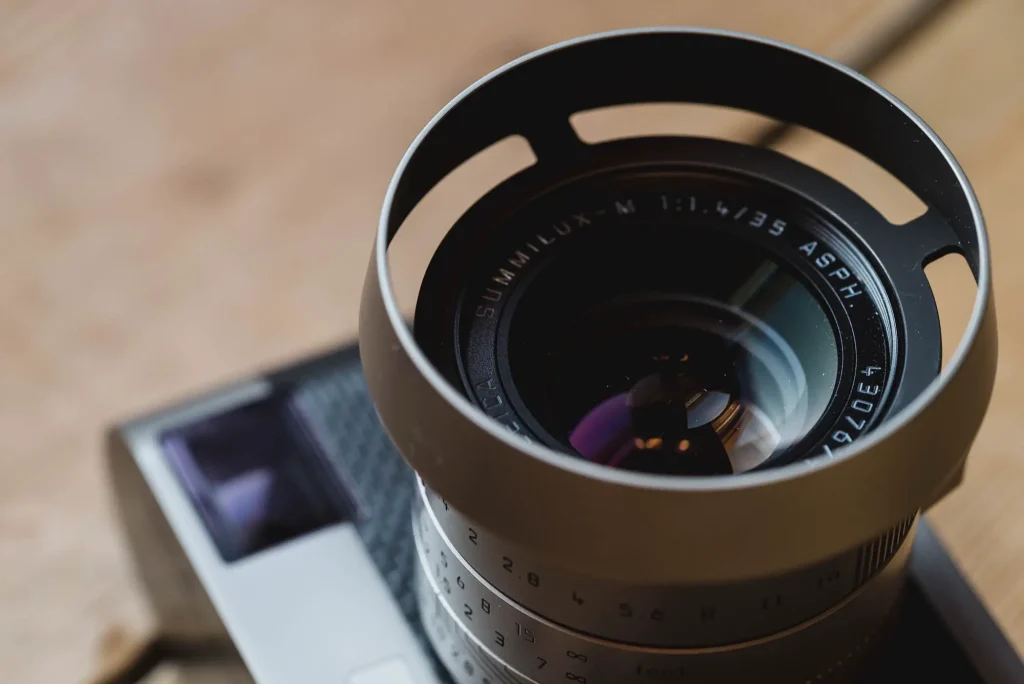
If I had any real concerns about the handling of the camera they would be the grip material and the lack of strap lugs. The grip material just feels thin and insubstantial like it might tear with use. It’s ok to look at, I’m just not sure I’d trust it in the long run. The lack of strap lugs instantly annoyed me too. If I wanted to carry it with a strap I’d have needed to use the leather half case it came with that had a stupidly short strap. I ended up carrying it in a small shoulder bag, or just putting it down every now and again… Which given its value didn’t make me very comfortable. Both of these issues lead me to a feeling that I wasn’t really supposed to use the camera, it gave it a feeling of being a display or collectors item that hadn’t been designed to be used in a practical way. I might be wrong, and I’m sure some people do use them, but it irked me a bit when I was trying to get the most out of it as a tool.
The shutter
It’s not all bad though, some of the way it worked I found very impressive, the shutter being one particular area. The Leica M60, like other digital Leicas has a metal leaved vertical focal plane shutter, which by rights should be louder than the cloth shutter in my film Leicas. It’s actually not, it’s almost as quiet, and considering it re-cocks itself at within the noise it makes, I find it very impressive indeed. It’s also seemingly very quick to be ready for the next photo. I took a string of shots of a seegull in flight, just snapping pretty much as quick as I could press the button and didn’t feel any lag or stuttering between shots. I must admit, this particular experience was one where I really felt the difference between what I had in my hand in terms of technology when compared to my M-A. Both new cameras, both lovely in their own right but a world apart.
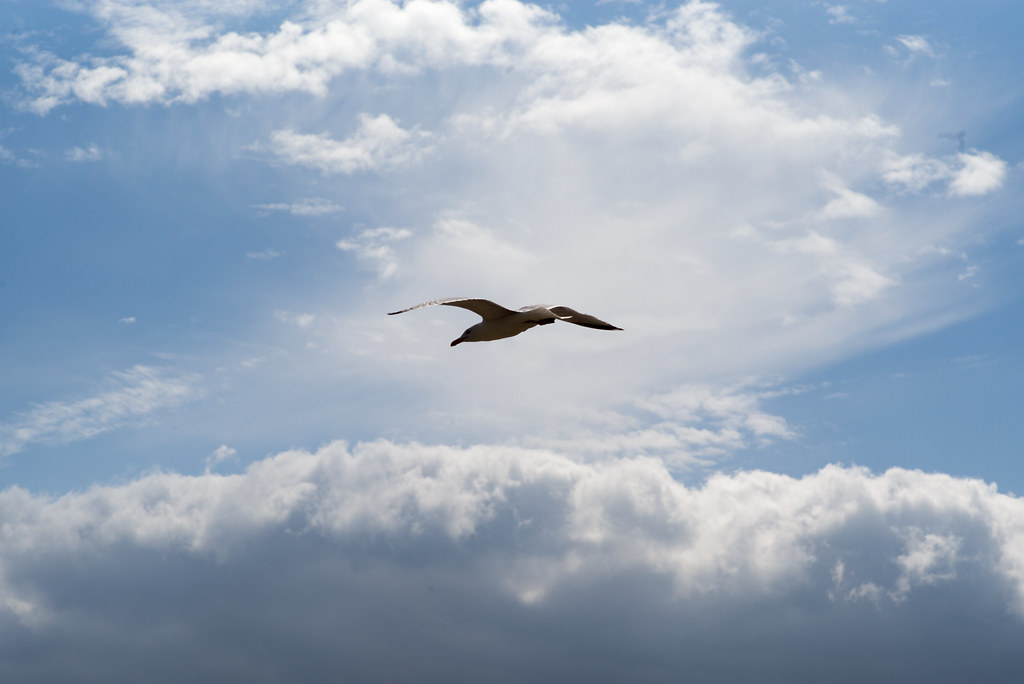
It was actually commented on my M-A review, “why don’t Leica make a film camera with some of the tech from their digital counterparts?” (or words to that effect). My response was to simply say that “we don’t need the technology in the film cameras”. Taking photos of that bird as it flew past though, there was a slight wavering in my opinion. The click, click, click was just effortless as it flew past me. This was the second time I had this reaction over the course of a full day shooting with the Leica M60, earlier I’d been snapping away taking photos of the mother-in-law in a go-cart, but I’d been giggling so much at the time I’d not really had time to reflect about the camera.
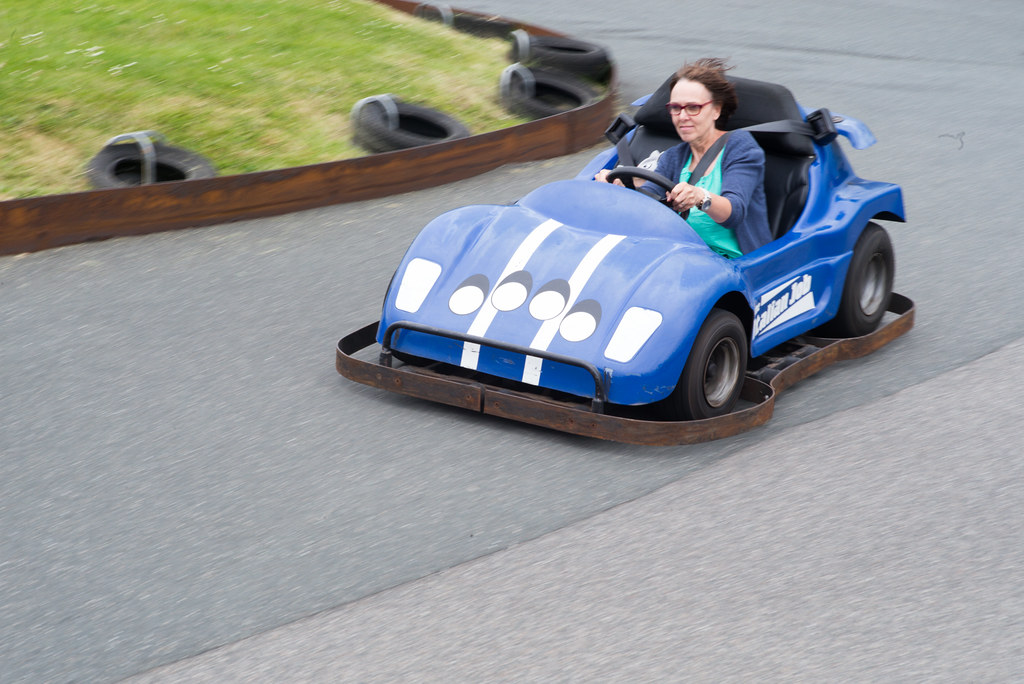
Taking the bird, I had time to think, and when I sat down with it after I had that feeling you get when you feel like you have made an error of judgement… Maybe this was what I wanted, maybe I did need to be able to take 6 photos of a bird in flight…? And I wouldn’t want to shoot 1/6th of a roll like this if I just had a film camera… “Oh crap” I though, maybe I want a digital camera… …? Oh no, hang on, reality check… I’ve just taken 6 photos of a bird in flight, non of which will be any good, just because I could. If I’d had my film camera, I would have only taken one photo, if at all, and therefore the speed of the camera and frequency I can take photos was pretty much irrelevant to me. Yep, there it was, that welcome feeling of having talked myself back round to my own opinion. This was of course a big reason I don’t shoot digital! I’d taken 6 photos I wasn’t going to keep just because I could take 6 photos with little concern for the outcome.
Anyway, I digress, I shall come back to this point a little later.
Controlling the camera
Excluding the aperture control which is of course on the lens, the Leica M60 has a total of four buttons and dials. An on/off switch, an ISO dial on the back, a shutter speed dial and the shutter button. All of these feel spot on to me, everything that should rotate smoothly is silky smooth, and everything that clicks does so with precision. Being fussy, the lenses focus is possibly ever so slightly too stiff for my tastes. My Summicron has the smoothness, but is a lot easier to turn quicker. The shutter speed dial clicks with ease though, clicking through both marked and intermediate speeds, which I thought was a nice touch. The shutter button also feels perfectly weighted at both half and full press.
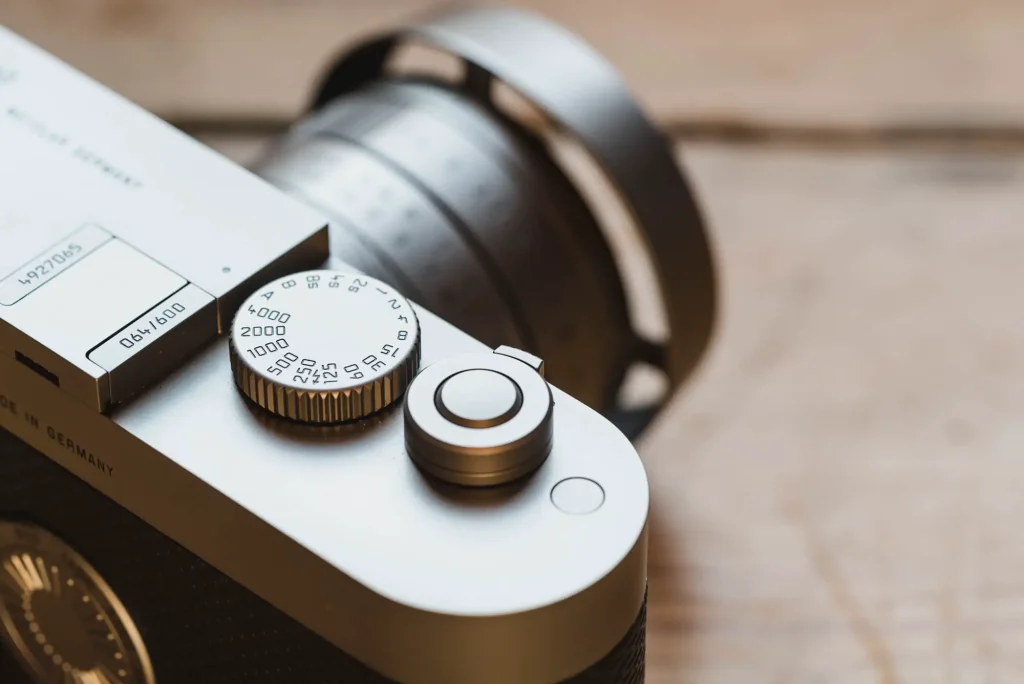
Of course this was all lovely, but broadly expected, it’s not like Leica would make a £12k camera feel cheap. Not like the way some of their cameras do with the little bits of black plastic I dislike so much… This was actually one thing that really struck me about the Leica M60 when I started using it, and was represented quite neatly – once again – by the ISO dial on the back. What the Leica M60 has, is exactly what I think the Leica M7 should have, but doesn’t. Oh how I have moaned about that shitty dial on the back of the M7! It’s fiddly, and in a large part – due to how I shoot with the camera – mostly redundant. All it needed to be was a simple metal dial for selecting the film speed. And that is exactly what the Leica M60 has, a simple, elegant, single functioned dial for selection of ISO.
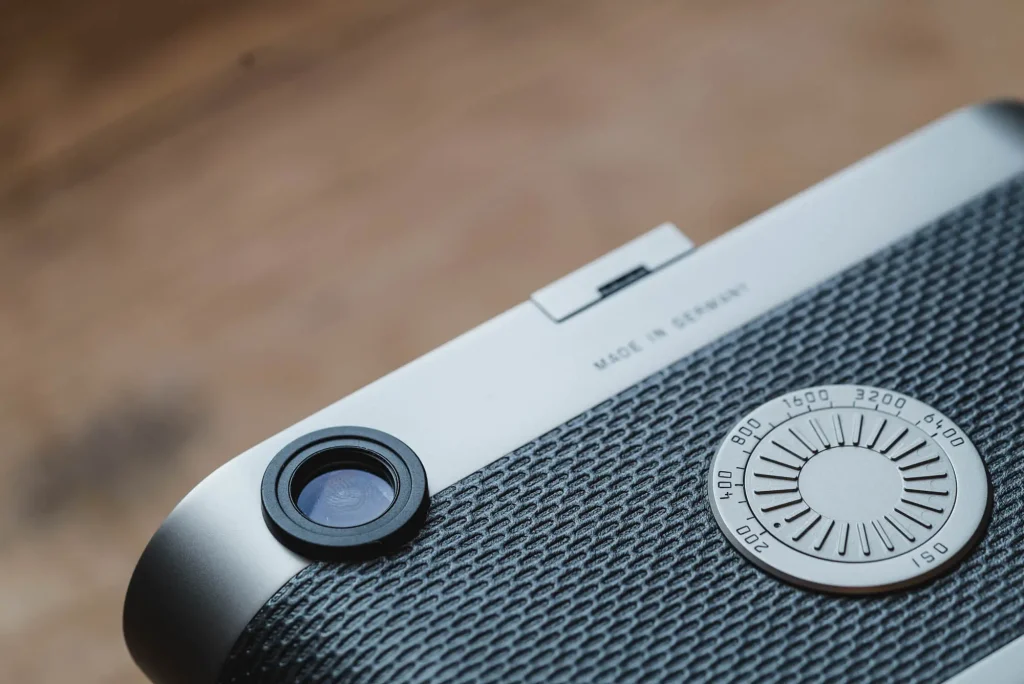
A digital Leica M7
Whilst this ISO dial does stand it apart from the M7, the Leica M60 actually feels very much like the M7 in the way it functions. This is probably a big factor in helping my experience with it be such a positive one. As much as I’ve moaned about that dial on the back of the M7, I have also frequently praised the camera as a whole for being one of my favourite Leica cameras. The joy of both Leica M7 and M60 in shooting is not just the fact that they have a a built in light meter and auto exposure, but it’s how the meter works. Just like the M7 the Leica M60 has a centre weighted meter that allows a very quick scan around the frame for a bunch of average readings. Once these readings are gathered you can make a decision about which you want, point the camera at the thing that gives the right shutter speed, half press to lock it in, recompose and shoot. I can only imagine this is fairly standard for all digital Leicas, but having not really shot one in anger before, it had not occurred to me they would work like this. Shooting it has certainly made me miss my M7 which is currently in Germany being fettled by the hands that know best.
The viewfinder
When I first saw a Leica M240 it took me a little while to realise what was missing from the front of the camera, and when I did realise it was the frame line illumination window, it took me even longer to find out just how the frame lines were still illuminated. Of course, the answer is obvious, they’re artificially illuminated. This is the same on the Leica M60 too, there’s no fresnel illumination window to light the frame lines naturally, they are lit artificially internally. I must admit, when I first had the Leica M60 in my hand, I did panic a bit about the lack of frame lines. My initial reaction was that it was broken, thankfully at that moment I half pressed the button, the lines appeared and I remembered a similar experience I’d had early this year with a M240 in a shop. When using the camera, I didn’t even think about the frame lines, and certainly didn’t spot any real difference between the artificially lit ones and the frame lines on for eg my Leica M-A. That being said, whilst I have no issue with the frame lines, I think the lines of the design of the front of the camera isn’t quite as balanced as with the window. Though I’d hardly call that an issue with the camera as a whole.
The meter reading
One very nice feature of the viewfinder in the M Edition 60 is the red light meter readout. It’s extensively the same as it is in my M7, with one added feature. The light level of the readout changes. When light is low, the red readout glows dimly, then when the light is bright, it glows brighter. It’s only a small thing, but I like that. Other than that, it’s just like a Leica M7 viewfinder, it shows the shutter speed selected in auto and when in manual has the same set of 3 LEDs that originated in the M6 TTL.
Image quality
I’ve really struggled to quantify the image quality of the Leica M60. For a start, I have no experience of digital Leicas, so I have very little to compare it to. I tried comparing it to files taken with a Leica M240 taken by a chap called Cody on twitter (thanks for the help again Cody). We came to the conclusion that they are very similar, and in fact probably the same. But since I can’t make a direct comparison, I’m not really 100% sure of that either. I’d also thought about comparing it to one of my Sonys, maybe the A7s. But when I set myself up to do a comparison in my lounge at home I realised how pointless it was, not to mention how tedious and boring it was going to be. The reality is, it takes nice enough photos. There is plenty enough dynamic range from what I can see in my photos and its not particularly noisy even at 6400 (its maximum).

What else really matters? I’m sure I used to care about digital camera image quality, but I struggle these days. All full frame sensor digital cameras seem to take nice enough photos these days, and the Leica M60 seems to me to be no exception. I feel like thats a vague answer, and I sort of feel I need to apologise for that… But, whilst writing this I’ve tried a few times to come back to this part of the post and conjure up more to say, but I just don’t have it. I suspect, actually, that many looking to shoot with a camera like this would also have the same view… As long as the photos are broadly as good as anything contemporary to it, what more could anyone want?
A “look”?
Well, maybe some people would want more… Outside of the usual objective merits by which digital cameras seem to be measured, I did note a few times that the images I was taking had an identifiable “look” to them. I don’t really know how to explain this other that to say certain images, especially those taken indoors, had a more gentle tonality to them than I might expect from an “average” digital camera. This was actually what lead me to the conversation with Cody I mentioned above. Subsequent to this convo with Cody I continued reading and found numerous posts and threads on forums about this, and then discovered a whole debate about then difference between the M9 ccd sensor and the cmos in the m240… What a can of worms I’d opened there! But, apparently it seems, some people do want more than I’d surmised…? Would I want more? No, as I say, image quality looks just fine to me, and when I’m shooting digital I’d probably add that gentle tone myself as part of my post process if I felt it necessary.
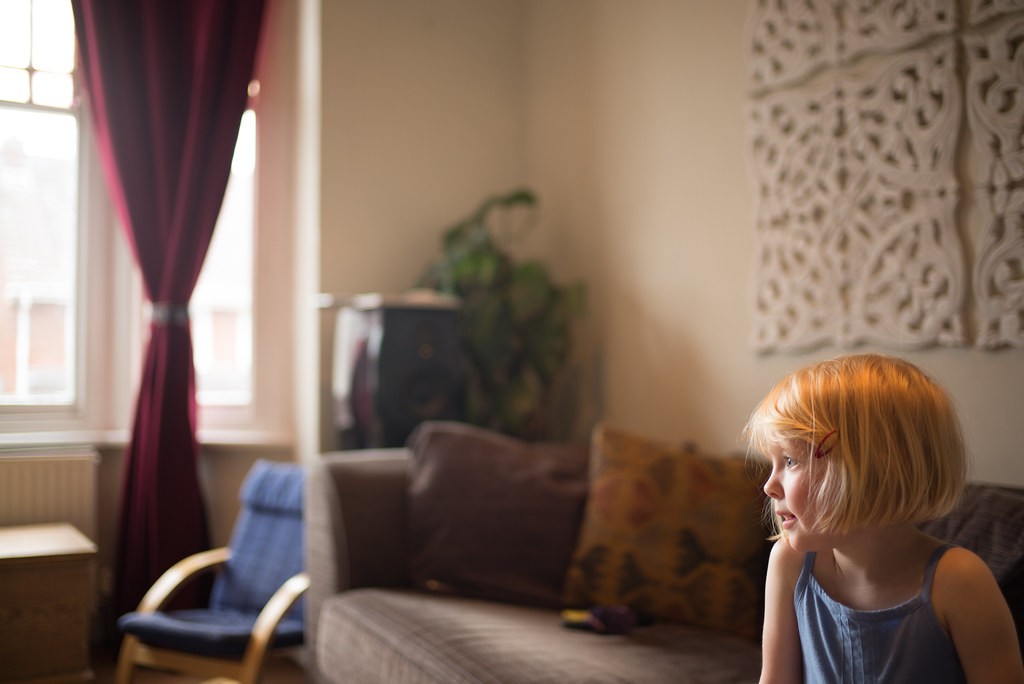
Shooting the Leica M Edition 60 – The mental and emotional response.
When I started writing this post I decided I wanted to answer three questions. I wanted to find out if the experience of shooting the Leica M60 is film-camera-like enough to please a film photography fanatic like me, if there anything more to it than just a facsimile of a film camera, and if it really is that unusual a proposition as a product? I think so far, I’ve really only answered the last of these questions. That is to say, in short, I don’t think it is an usual proposition. I think it is an unusual product within the landscape of digital cameras, but actually, it does make sense as an alternative to what is out there… At least as a digital product.
The questions that remain, are those relating to it’s similarity to an analogue product; a film camera. When the Leica M60 first landed at my office, it was that which was really what I expected to be talking about more. But as you have just read, I’ve barely made comparison to my film cameras. In fact, I’ve really only compared it directly to my M7, and that comparison is based on the way the camera functions in terms of its basic feature set rather than actually how it feels to shoot, and I think this is an important stipulation to make too. You see, for me, I haven’t felt at all like the Leica M60 is a film camera, I’ve never been fooled by it, not even a little bit. It feels like an electronic product, with its artificially illuminated frame lines, lack of film advance, its bigger size etc, it just doesn’t feel familiar enough to trick me. But more importantly, I when using it have always had it in the back of my mind that it is a digital camera, and as such I treat it differently to how I treat my film cameras.
But actually, the Leica M60 being very much a digital camera is the beauty of it. What’s great about it is not that it’s similar to a film camera, it is more that it’s a simplified digital camera. Yes, it does give me a user experience similar to that of a film camera, but brings its own distinct advantages and differences to the table. The ability to take a few photos in quick succession, and indeed take a few photos without thinking about ramifications of it too much, is going to be an advantage. I’m not sure it’s right for my shooting style, but others will definitely find it as such. It also provides a digital end result, which although, again not my preference, is the preference of the majority of photographers these days. But, with these advantages, it also brings a shooting experience that is almost entirely distraction free, and completely without complication. It offers very little more than the basics of photography, and as such the shooting experience – certainly for someone like me – feels effortless.
Chimp free shooting
But this is not all, possibly the biggest, and certainty the most unique thing the Leica M60 offers as a digital camera is the lack of ability to chimp; the lack of ability to look at the back of the camera after every photo. As humans, we have an amazing ability to get lost in an idea or moment. A good example of this is when I got wrapped up in the idea of capturing a seagull in flight.
This was not a great idea at all, and the result was quite poor. But whilst I was there, in my head it was a great idea that had potential for producing a good photo. The reality is, I’ve never tried to take a photo of a single bird in flight before, it’s just not my thing. When I took the photos, all 6 of them, I knew they weren’t all going to be good, but since I couldn’t look at the back of the camera to find out, I was left in the illusion that probably one of them was going to be as good as I’d hoped. And because I was left feeling positive about that idea; I thought I had captured the bird well so I let the idea alone. Of course, when I came back to look at the pictures when I got home, I realised they were all a bit pants, but by this time I didn’t care, it was just an idea that hadn’t worked out. Now, had I been there with a camera that I could have seen the photos on the back of I might have got wrapped up in a moment of frustration that I am sure all photographers experience once in a while. The moment of trying to get the shot again with the next seagull that came along. If I had, I could quite easily have ended up with 36 photos of a seagull, and still not been any happier with the result.
By this merit, what the M Edition 60 seems to offer is an entirely unique shooting experience. It allows you to take a string of photos with little concern about using up too much film, but seems to avoid the potential of getting you stuck in the chimp, shoot, chimp, shoot, chimp, shoot loop. If you are a confident photographer, or at least confident enough in yourself to get a good shot of most things, then it can give an even more concern free shooting experience. Possibly even the most concern free, distraction free shooting experience of any digital camera.
And so to my concluding thoughts about the Leica M Edition 60
As you might have gathered, I like the Leica M60. I really enjoyed shooting with it; the experience it offered me was one of almost complete joy. The problem is – and this might seem to contradict what I’ve just said – the end result was digital, and for me, that is a problem I can’t really overcome. As much as I think the results are lovely, they just aren’t as lovely as those I get from my film Leicas. Because of this, for me, it wouldn’t tempt me away from film on a permanent basis. I’d love to own one and could imagine shooting with it on plenty of family occasions when I don’t want the cost of film, but do want lovely photos. But for that, this camera is far too expensive for me, and far too much like an ornament for that matter. If Leica made a “lesser” version, a cheaper made – but with strap lugs and a better grip – slimmed down and more importantly less expensive than the Leica M type 240, I probably would buy one. But, it would have to be a lot cheaper… after all, you are getting less for your money, not more!

The point being, whilst this might be the perfect digital camera for many a film photographer, it definitely wouldn’t replace film shooting for most. It comes very close, and actually maybe – dare I say – ever so slightly supersedes the film camera shooting experience, but I fear for the majority of film shooters it could never supersede the end result. This all said, I do think there is more to this concept than just a digital camera for film camera shooters, I actually think it would do a lot of photographers a lot of good spending some time with it. The distraction free shooting experience is not one to be balked at, certainly not in the way it seems many digital photographers have.
In this world of consumerism, where we are up-sold new tricks year on year, the Leica M Edition 60 offers something refreshingly different. As a slimmed down product that is more by the nature of it being less, it’s something that really couldn’t be upgraded. And actually, slightly ironically, since Leica made it as a limited edition with a cost of £12,000, it departs itself further from from the normal trudges of consumerism just by the merit of its eye watering price tag. The problem is, because it is so expensive and so exclusive, it also departs itself from the reaches of most normal people, and as such leaves the wonderful experience of shooting it to those that are crazy-rich or cheeky enough to blag a loan of it for a few days… and I think that this is a great shame.
In short, Leica, if you are reading this, please, do the world a favour and make an affordable version, you can even apply your definition of “affordable”, do what you have with the M-A, and make it just a little bit cheaper than its peers by the merit of it being made of less bits. But whatever you do, bring something to market, as in my opinion more photographers, both digital and film deserve to experience the joy of the Leica M Edition 60!
Thanks for reading
Hamish
More reading:
Some posts on street photography blog – start here
Leica M60 Edition Review: Gorgeous steel-grey retro pushes all the right buttons
Share this post:
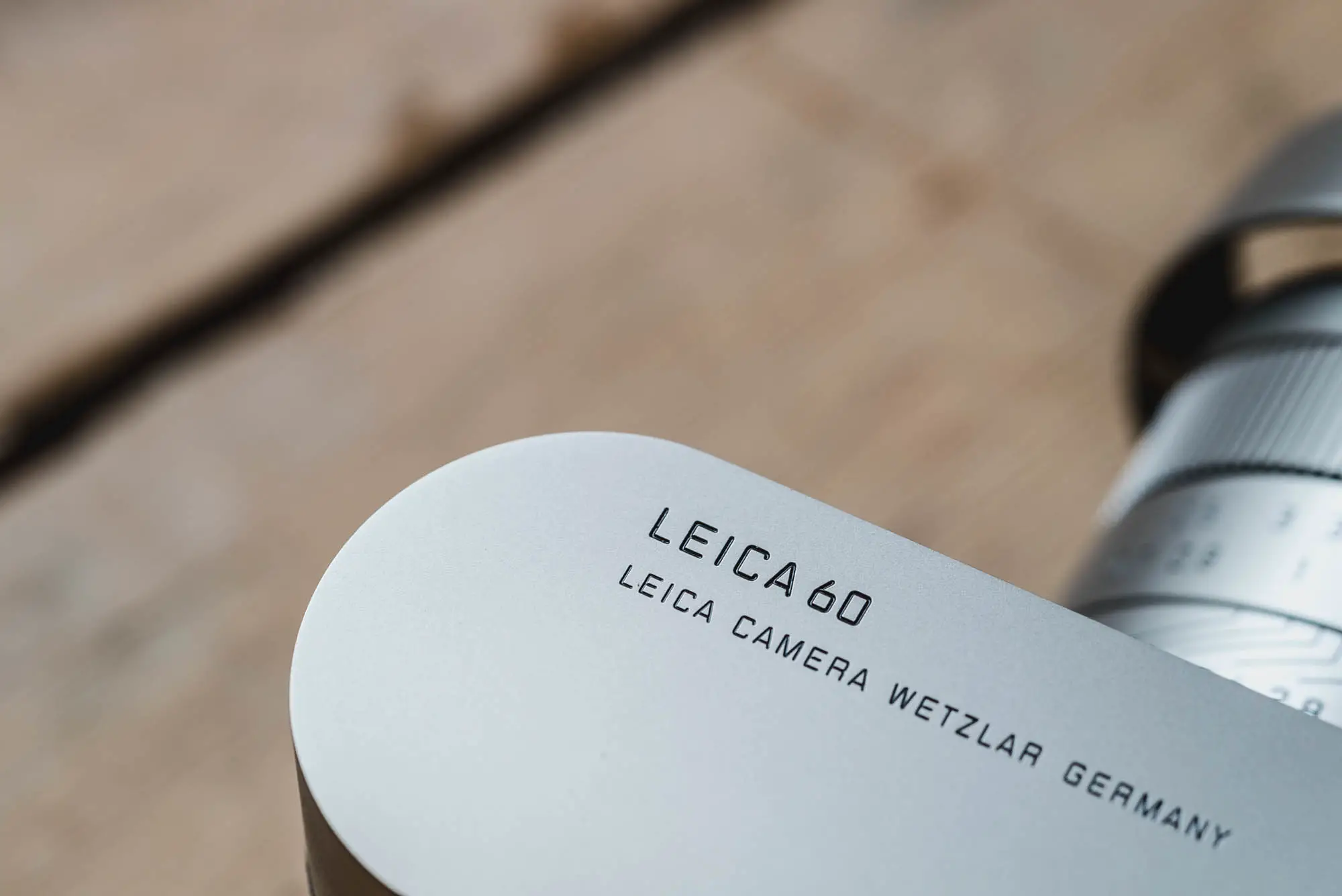








Comments
Martin Smith on Leica M Edition 60 (Leica M60) Review – the Deconstruction of the Digital Camera
Comment posted: 03/07/2015
This is a very interesting camera and the sort I've thing I would be looking for in a Digital M, the idea of a simple digital camera without extraneous controls and menus sounds awesome. The main problem is the price tag is just too rich for me. If Leica were to bring out a non special edition black version, body only and with strap lugs I would be seriously tempted.
Comment posted: 03/07/2015
David Mantripp on Leica M Edition 60 (Leica M60) Review – the Deconstruction of the Digital Camera
Comment posted: 03/07/2015
Naturally, I used to own one. Many years ago.
Comment posted: 03/07/2015
Chris Routledge on Leica M Edition 60 (Leica M60) Review – the Deconstruction of the Digital Camera
Comment posted: 03/07/2015
Comment posted: 03/07/2015
Comment posted: 03/07/2015
jeremy north on Leica M Edition 60 (Leica M60) Review – the Deconstruction of the Digital Camera
Comment posted: 03/07/2015
Very comprehensive. It is a beautiful camera to look at but without strap lugs a winder and rewind knob, of course it would be. The lack of strap lugs gives away the intended use for this camera though, to look beautiful in a display case.
I like the concept of a digi camera without a screen but as a film only shooter that’s normal. Somehow I don’t see anyone other than a Leica completist dropping 12K for this camera. The ‘less is more’ concept can go only so far before peole ask why pay more for less.
I agree totally with your comments on the development of the various complexities of modern digital cameras. That appeals to the geek photographers. I remember 25 years ago my pal who had the camera shop in Droitwich amazing me with the latest top of the range Canon SLRs with its many automated features. I think it was one of the first EOS. It was rather bewildering all the same. With dSLRs it has got even more so, as with any serious digital camera. Menus galore for things I’d not even consider.
For a switcher to digital, this M60 would be ideal but for the price. Regarding the debate of film vs digi, I rarely hear one of the main reasons for me; that film cameras are wonderful to use. They are simple and solid and don’t become obsolete . This M60 would fit the bill but for the obsolescence problem.
What we need is a solid simple camera system with a sensor which is replaceable, cheap and with a wide dynamic range… Ah we do have that, it’s called film!
Comment posted: 03/07/2015
I must have gone in this mental circle a hundred times writing this post!Brian on Leica M Edition 60 (Leica M60) Review – the Deconstruction of the Digital Camera
Comment posted: 03/07/2015
Leica should have released a CCD-based M Monochrom with this concept. Between the M60 and M Monochrom, the latter is closer to using a film camera. Just turn off the LCD review.
Comment posted: 03/07/2015
Roger Thomas on Leica M Edition 60 (Leica M60) Review – the Deconstruction of the Digital Camera
Comment posted: 03/07/2015
Comment posted: 03/07/2015
Comment posted: 03/07/2015
Francois on Leica M Edition 60 (Leica M60) Review – the Deconstruction of the Digital Camera
Comment posted: 03/07/2015
The only issue is really the cost of these, all the Leica digital cameras seem to lose a lot of value quickly (compared to film M or R), so now it's a question of how long before I make the jump to digital.
I recently purchased a couple of mint SL2 for about $200 each, which considering the quality of workmanship of those, I do not see the need to switch to digital...yet.
Comment posted: 03/07/2015
Thomas Halfmann on Leica M Edition 60 (Leica M60) Review – the Deconstruction of the Digital Camera
Comment posted: 03/07/2015
Last week I asked a Leica executive if there would be a chance that Leica would issue a M Monochrom with the concept of the Leica M 60 (no display), but he told me that there are no plans and that the market would be just too small. So I will keep the Leica M 6o for daily photography, sell my M9 and M (240) and hope that Leica will issue a M 60 Monochrom one day...
Comment posted: 03/07/2015
Comment posted: 03/07/2015
Comment posted: 03/07/2015
Mike Evans on Leica M Edition 60 (Leica M60) Review – the Deconstruction of the Digital Camera
Comment posted: 04/07/2015
I throughly enjoyed reading the M60 report and I can't disagree with much, if anything. I've used the M60 a lot so I am well qualified to comment. I really like the concept and the only problem with the camera echoes your views on weight. The steel camera (and the unique steel lens which will become a collectors' piece in itself) is too heavy. And the lack of strap lugs is a case of designer vanity over practicality. It's as if the designer never expected the camera to be used. The leather case is very much an afterthought and would have been totally unnecessary if lugs had been incorporated in the camera. The M60 isn't even ridiculously expensive by Leica special edition standards. An M-P 240 and 35mm Summilux comes in at £9,000 and the premium can be explained by the steel, special status and collectability aspects.
But back to basics. The M60 is indeed a digital M7 (notwithstanding your sensible comparison between film and digital) and if you can make pictures with an M7, M-A, MP or any other film M you can certainly do so with the M60. Like you, I am no Luddite and enjoy modern digital cameras from Sony, Fuji as well as Leica. But there is just something totally appealing and minimalistic about the M60 concept.
When I discussed the camera with Stefan Daniel I encouraged him to make a production version. And, you know what? I think he would love to. It all depends on the bean counters, but if they relent, I hope they will resist the temptation to make the camera more expensive than the M-P. I think it would sell at the right price, especially to photographers who are still loving their film Ms.
When I get back to my desk I will do a link piece.
Mike
Comment posted: 04/07/2015
Comment posted: 04/07/2015
Comment posted: 04/07/2015
Ezra on Leica M Edition 60 (Leica M60) Review – the Deconstruction of the Digital Camera
Comment posted: 04/07/2015
Ray on Leica M Edition 60 (Leica M60) Review – the Deconstruction of the Digital Camera
Comment posted: 13/07/2015
Comment posted: 13/07/2015
Christos Theofilogiannakos on Leica M Edition 60 (Leica M60) Review – the Deconstruction of the Digital Camera
Comment posted: 18/02/2016
Looking at life and light no camera WHY! Am I sick! Going mad! | a thebeautifuleyes blog on Leica M Edition 60 (Leica M60) Review – the Deconstruction of the Digital Camera
Comment posted: 16/03/2016
Kyle Painting on Leica M Edition 60 (Leica M60) Review – the Deconstruction of the Digital Camera
Comment posted: 02/05/2016
Comment posted: 02/05/2016
Comment posted: 02/05/2016
The Yashica Y35 - it’s not for us hoity-toity elitist film photographers, you know!? - 35mmc on Leica M Edition 60 (Leica M60) Review – the Deconstruction of the Digital Camera
Comment posted: 09/01/2019
A Love Affair With The Leica M-D 262 – by Ong Sien Hong - 35mmc on Leica M Edition 60 (Leica M60) Review – the Deconstruction of the Digital Camera
Comment posted: 03/05/2019
The Leica M6 Classic & Leica M6 TTL - A Review of Both Variants - 35mmc on Leica M Edition 60 (Leica M60) Review – the Deconstruction of the Digital Camera
Comment posted: 21/04/2020
Jim Lehmann on Leica M Edition 60 (Leica M60) Review – the Deconstruction of the Digital Camera
Comment posted: 31/12/2022